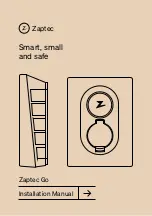
I01�High-voltage�Components
4.�Electrical�Machine�Electronics
70
Activation�of�the�electrical�vacuum�pump
The�electrical�machine�electronics�provides�the�hardware�for�the�evaluation�of�the�signals�of�the
brake�vacuum�sensor�and�for�the�activation�of�the�electrical�vacuum�pump.�The�function�logic�for
the�activation�of�the�electrical�vacuum�pump�is�located�not�in�the�EME�control�unit,�but�in�the�DSC
control�unit.�The�EME�and�DSC�control�unit�exchange�sensor�signals�and�the�switch-on�request�for�the
electrical�vacuum�pump�via�bus�signals�at�the�PT-CAN�and�PT-CAN2.
The�brake�vacuum�sensor�is�mainly�known�from�conventionally�driven�vehicles�with�automatic�engine
start-stop�function.�Similar�to�those�vehicles,�it�is�also�installed�in�the�I01�at�the�housing�of�the�brake
servo.
The�sensor�is�supplied�with�voltage�from�the�electrical�machine�electronics�and�returns�a�voltage
signal�depending�on�the�vacuum�in�the�brake�servo.�This�analog�sensor�signal�is�converted�by�the�EME
control�unit�to�the�actual�brake�vacuum�and�sent�as�a�bus�signal�to�the�DSC�control�unit.
The�DSC�control�unit�evaluates�the�brake�vacuum�signal,�includes�dynamic�handling�characteristics
(e.g.�the�driving�speed)�and�the�accelerator�pedal�actuation�and�determines�whether�the�electrical
vacuum�pump�should�be�switched�on.�The�function�logic�in�the�DSC�control�unit�also�takes�into
consideration�a�hysteresis�so�that�the�electrical�vacuum�pump�is�not�constantly�switched�on�and�off.
Instead,�it�remains�switched�on�until�a�requested�minimum�level�of�the�brake�vacuum�is�reached.�The
DSC�control�unit�sends�back�the�switch-on�request�from�the�electrical�vacuum�pump�as�a�bus�signal�to
the�EME�control�unit.
The�electrical�machine�electronics�contains�an�output�stage�(semiconductor�relay),�with�whose�help
the�voltage�supply�of�the�electrical�vacuum�pump�can�be�switched�on�and�off.�Upon�request�the
output�voltage�of�the�DC/DC�converter�can�be�shifted�through�directly�to�the�electrical�vacuum�pump.
Switch-on�currents�of�up�to�30 A�can�occur�in�the�process.�The�current�level�is�restricted�electronically
to�protect�the�output�stage�and�the�line.�There�is�no�control�of�the�power�or�engine�speed�for�the
electrical�vacuum�pump�–�it�is�simply�switched�on�and�off.
A�malfunction�of�the�electrical�vacuum�pump�is�identified�using�a�brake�vacuum�sensor�by�means�of
the�no�longer�available�vacuum.�At�least�the�legally�prescribed�deceleration�(increased�brake�pedal
force)�is�available.�The�DSC�will�realize�a�type�of�hydraulic�brake-servo�assistance,�i.e.�depending�on
the�driver�pressure�a�hydraulically�reinforced�circuit�pressure�is�generated.
Advantage:�Lower�brake�pedal�force�also�in�this�fault�scenario
Disadvantage:�Modified�brake�pedal�response.
Содержание I01
Страница 1: ...Technical training Product information BMW Service I01 High voltage Components...
Страница 49: ...I01 High voltage Components 3 Electric Motor 43 System wiring diagram for the drive control...
Страница 178: ...I01 High voltage Components 12 Technical Safety Precautions 172 Main wiring diagram for high voltage interlock loop...
Страница 189: ......
Страница 190: ...Bayerische Motorenwerke Aktiengesellschaft Qualifizierung und Training R ntgenstra e 7 85716 Unterschlei heim Germany...















































